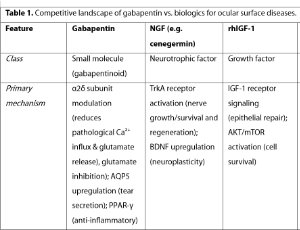Loading

2025
Volume 4, Issue 1, p1-25
Articles published in this issue are Open Access and licensed under Creative Commons Attribution License (CC BY NC) where the readers can reuse, download, distribute the article in whole or part by mentioning proper credits to the authors.
Repeatability of Scheimpflug Corneal Tomography in Patients with Keratoconus and Different Body Mass Indices
James S Lewis, Lize Angelo, Akilesh Gokul, Charles NJ McGhee, Mohammed Ziaei
To evaluate the repeatability of corneal tomographic parameters in keratoconus patients across different body mass index (BMI) categories. This prospective study was conducted at the University of Auckland, New Zealand, from June 2021 to June 2022. A total of 243 eyes from keratoconus patients aged 18-45 years were categorized into normal (BMI ≤24.9; n=55), overweight (BMI 25.0-29.9; n=58), and obese (BMI ≥30.0; n=130) groups. Patients underwent three consecutive scans using the Pentacam AXL.
Arch Clin Ophthalmol, 2025, Volume 4, Issue 1, p1-11 | DOI: 10.33696/Ophthalmology.4.015
- Abstract |
- Full Text |
- Cite |
- Supplementary File
Lens Clarity and Visual Fatigue in Children: The Role of Eyewear Hygiene and Healthcare Professionals
Mirela Tushe
Visual fatigue, also known as digital eye strain (DES), has become a growing concern among children due to increased exposure to digital screens, especially after the global shift to remote learning during the COVID-19 pandemic. Although prolonged screen time and poor ergonomics are well-recognized contributors, the influence of eyewear hygiene-specifically lens cleanliness-on visual discomfort is less explored.
Arch Clin Ophthalmol, 2025, Volume 4, Issue 1, p12-16 | DOI: 10.33696/Ophthalmology.4.016
Gabapentin for Ocular Surface Disorders: Bridging Molecular Mechanisms to Therapeutic Innovation
Caterina Gagliano, Alessandro Avitabile, Dario Rusciano
This commentary critically evaluates Rusciano's (2024) comprehensive review on gabapentin (GBP) as a multifaceted therapy for ocular surface diseases, emphasizing its transition from systemic to topical applications. We highlight the review's synthesis of GBP's polypharmacology—spanning calcium channel modulation, anti-inflammatory effects, and neuroprotection—and its innovative integration with nanotechnology (e.g., nanoceria platforms) to overcome corneal delivery challenges while potentially reducing systemic side effects associated with oral administration.
Arch Clin Ophthalmol, 2025, Volume 4, Issue 1, p17-25 | DOI: 10.33696/Ophthalmology.4.017
Recommended Articles
Macular Microcirculation after Rhegmatogenous Retinal Detachment Repair Evaluated by OCT-Angiography
In the process of rhegmatogenous retinal detachment (RRD), retinal homeostasis may be adversely affected with resultant modifications in retinal and choroidal tissue. Hypoxia and nutrient deprivation along with inflammation at the detached retina may lead to morphological and microvascularity alterations. These changes imply that the functional status of the macula may not be entirely restored despite anatomical repair.
Focal Aggregates of Normal or Near Normal Uveal Melanocytes (FANNUMs) in the Choroid. A Practical Clinical Category of Small Ophthalmoscopically Evident Discrete Melanocytic Choroidal Lesions
Focal aggregate of normal or near normal uveal melanocytes (FANNUM) of the choroid is a term the author has proposed to categorize small melanocytic choroidal lesions that are not detectably thicker than surrounding normal choroid by B-scan ocular ultrasonography. In this article, the author describes the clinical features of small melanotic choroidal lesions he categorizes clinically as FANNUMs and discusses the presumed compositional spectrum of such lesions.
Mega-Dose Dietary Riboflavin in Treatment in Keratoconus, Post-Refractive Cornea Ectasia and Migraine. Has Its Time Arrived?
Recently, several studies and investigators have shown the beneficial effects of high dose dietary riboflavin (vitamin B2) in the treatment of keratoconus, post-refractive (LASIK, PRK & Radial Keratotomy) ectasia (with sunlight exposure) and patients treated with our own protocol (NIH Clinical Study – www.clinicaltrials.gov - # NCT 03095235) discovered significant relief for intractable migraine headaches and/or ophthalmic migraine (classic migraine visual symptoms without headache).
Multidisciplinary Acute Care of Central Retinal Artery Occlusion with a Stroke Paradigm: A Call to Action
Central retinal artery occlusion (CRAO) is an ophthalmologic emergency that can result in permanent vision loss. Over 25% of CRAO are associated with acute cerebral ischemia, and there are many parallels between CRAO and acute ischemic stroke. There are no definitive treatment algorithms for CRAO, however there may be opportunities to treat CRAO as an “eye stroke”. Given the similarities to acute ischemic stroke, multidisciplinary involvement and stroke algorithms should be considered and tested for this disease.
Generating Awareness and a Planned Multidisciplinary Treatment Approach Can Save Both the Sight and Life in Retinoblastoma in Developing Countries
While rare, retinoblastoma is the most common (1:16000 – 18000 live births) intraocular and life threatening tumor of childhood. According to the World Health Organization (WHO), 66% of children present with symptoms before 2 years of age and 95% before 5 years of age. About 8000 new cases are detected annually with the highest incidence in Africa and India. In fact, more than 1400 cases each year are from India. According to Mukesh et al., 43% of the global burden lives in 6 countries of Asia (India, China, Indonesia, Pakistan, Bangladesh & Philippines).
Comment on “Retinitis Pigmentosa and Molar Tooth Sign Caused by Novel AHI1 Compound Heterozygote Pathogenic Variants: A Case Report”
Joubert syndrome (JS) is a rare congenital neurodevelopmental disease which is basically a primary Ciliopathy. It’s characteristic manifestation on imaging is so called ‘molar tooth sign’ in the brainstem and cerebellum. JS can involve multiple organs, mainly including retina, kidney, bone and liver. Clinical signs of early onset JS include hypotonia, developmental delay, breathing abnormalities, and ocular motor apraxia.
Stroke and Visual Loss in a Young Girl with Dengue Fever – Report of a Case and a Mini Review
The case of a young girl with Dengue fever presenting with seizures and bilateral visual loss is presented. At the time of presentation, she had right hemiplegia and dysarthria but was not dysphasic. Fundoscopy revealed presence of macular and disc oedema in the right eye and vitreous haemorrhage in the left eye.
Uhthoff ’s Phenomenon as Presentation of COVID-19 Infection
This is the first reported case of COVID-19 associated optic neuritis (ON) presenting with classic Uhtoff’s phenomenon typically associated with multiple sclerosis (MS). Uhthoff phenomenon, also known as Uhthoff sign or syndrome, is a transient worsening of neurological function lasting less than 24 hours that can occur in multiple sclerosis patients due to increases in core body temperature.
Assessment of Visual Function for Education: A Commentary on ‘VEP Visual Acuity in Children with Cortical Visual Impairment’
Last year’s article In the International Journal of Clinical and Experimental Ophthalmology [1] highlighted that Cortical Visual Impairment (CVI) is now the leading cause of visual impairment in the developed world [2]. It also provided a definition of CVI [3,4], and summarized its functional deficits, and methods of assessment.
Are Women with COVID-19 and Migraine Prone to AMN Type 2?
Acute macular neuroretinopathy (AMN), first described by Bos and Deutman in 1975 [1], is an infrequent yet increasingly diagnosed retinal condition, characterized by the acute onset of persisting paracentral scotomata with capricious vision loss in one or both eyes, associated with (peri)foveal petaloid (wedge-shaped) outer retinal lesions generally accepted to be caused by microvascular damage to the retinal capillary network of the macula [2,3].
Orbital Lymphoproliferative Disorders (OLPDs) in a 3-year-old Child: Case Report and Review of Literature
Orbital lymphoproliferative disorders (OLPDs) consist of a spectrum of diseases ranging from benign to malignant lesions including reactive lymphoid hyperplasia, atypical lymphoid hyperplasia, and lymphoma. OLPDs rarely present as an orbital mass lesion in children. Accurate discrimination of OLPDs is crucial for treatment planning. We report a case to investigate the clinical and pathological
features of OLPDs in children.
A Rare Case of Vitreous Cyst
Vitreous cysts are regarded as ‘ocular curiosities’ as they are rarely seen and reported. They can be either congenital or acquired. Congenital vitreous cysts are usually isolated clinical findings and acquired cysts are observed in conditions like high myopia, ocular trauma, degenerative pathologies of the retina & choroid, and infections like Cysticercosis and Toxoplasmosis.
An Unusual Case of an Open Globe due to Airbag Injury and Scleral Lens Use
A 30-year-old woman who wears scleral contact lenses for keratoconus was brought to the emergency room after a motor vehicle collision where a deployed airbag hit her left eye. The patient was taken to the operating room for globe exploration and found to have two large scleral lacerations (one superiorly and one temporally) with significant uveal prolapse.
Repeatability of Scheimpflug Corneal Tomography in Patients with Keratoconus and Different Body Mass Indices
To evaluate the repeatability of corneal tomographic parameters in keratoconus patients across different body mass index (BMI) categories. This prospective study was conducted at the University of Auckland, New Zealand, from June 2021 to June 2022. A total of 243 eyes from keratoconus patients aged 18-45 years were categorized into normal (BMI ≤24.9; n=55), overweight (BMI 25.0-29.9; n=58), and obese (BMI ≥30.0; n=130) groups. Patients underwent three consecutive scans using the Pentacam AXL.
Lens Clarity and Visual Fatigue in Children: The Role of Eyewear Hygiene and Healthcare Professionals
Visual fatigue, also known as digital eye strain (DES), has become a growing concern among children due to increased exposure to digital screens, especially after the global shift to remote learning during the COVID-19 pandemic. Although prolonged screen time and poor ergonomics are well-recognized contributors, the influence of eyewear hygiene-specifically lens cleanliness-on visual discomfort is less explored.
Gabapentin for Ocular Surface Disorders: Bridging Molecular Mechanisms to Therapeutic Innovation
This commentary critically evaluates Rusciano's (2024) comprehensive review on gabapentin (GBP) as a multifaceted therapy for ocular surface diseases, emphasizing its transition from systemic to topical applications. We highlight the review's synthesis of GBP's polypharmacology—spanning calcium channel modulation, anti-inflammatory effects, and neuroprotection—and its innovative integration with nanotechnology (e.g., nanoceria platforms) to overcome corneal delivery challenges while potentially reducing systemic side effects associated with oral administration.
